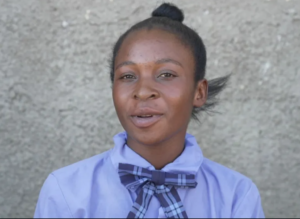An Analysis of the Current State of Free Education in Zambia
A little more than an hour’s drive southwest of Lusaka, the capital of Zambia, Chanyanya Primary and Secondary School is where the sun rises. On a cold winter morning, students rush to get a seat in their packed classes as the clock strikes seven o’clock. The free education plan in Zambia, which was launched in 2021, is both praised and criticized in this scene.
An Ideal Future for All Students
The courageous decision by Zambia to provide free elementary and secondary education has paved the way for millions of people. Two million more students have been able to attend state-run schools for free since 2021. This change in policy is in line with international initiatives to increase educational opportunities in sub-Saharan Africa and is a major step towards achieving universal education.
Mariana Chirwa, an 18-year-old student, is just one example of how free education has changed her life. “In 2016, while I was in fourth grade, I stopped attending school,” Mariana reveals. How my parents would have gotten me back into the classroom if there hadn’t been free education is something I’ll never understand. They do nothing but lounge about the house.

The Crisis of Overcrowding
Many schools are severely overcrowded as a result of the growth in student enrollment, which is generally a good thing. Class sizes have increased at Chanyanya, with some classes now holding more than 100 kids. This is not an isolated incident; rather, it is indicative of a systemic problem in Zambia as a whole.
“When I started in 2019, I had about 40 students, but now it’s around 100 plus, and that is just in one class,” remarks 33-year-old teacher Cleopatra Zulu, highlighting the drastic change. Because of free education, we get new students every single day.
Effects on the Standard of Education
There are worries regarding the quality of schooling due to the overpopulation crisis. Students such as Richard Banda, who is 16 years old, have observed shifts in the dynamics of their classroom. “We don’t learn in the same way as those times when we used to pay,” exclaims Richard. “When we were few, the teacher would explain a topic again if you didn’t understand, but now because we are many, the teacher doesn’t repeat it again.”
This finding shares more general worries regarding educational results in sub-Saharan Africa. Nine out of ten elementary school pupils in the area still have trouble reading and understanding simple texts, says UNICEF. Legislators are now refocusing their efforts on raising educational standards, which includes bolstering physical infrastructure and resources and employing more skilled educators.
Investment and Response from the Government
The Zambian government has recognized these issues, and they are working to resolve them. Minister of Education Douglas Syakalima characterizes the crowding as “a good problem,” saying, “I’d rather let the children be in a congested classroom than on the street.”
In order to address the problems, the government has:
1. Since 2021, we have invested more than $1 billion in the education industry.
Two. Defined a goal to construct more than 170 new schools
3. Dedicated to hiring an additional 37,000 educators by the end of 2026 for a total of 55,000.
The goal of these projects is to reduce crowding and make the classroom more manageable for teachers and students. However, additional problems have emerged as a result of the fast increase, especially in rural areas where adequate housing for teachers is scarce.

Maximizing Both Access and Quality
The challenge of expanding educational opportunities while preserving high-quality standards is illustrated by the situation in Zambia. Concerned about their children’s academic performance, some families have decided to send them back to private schools. This trend highlights the significance of tackling quality concerns in conjunction with increased accessibility.
“When you don’t sit properly in a classroom, that affects the way that you pay attention to teaching, the way that you write your notes,” says Aaron Chansa of Zambia’s National Action of Quality Education (NAQEZ), who stresses the negative effects of classroom congestion on students’ ability to study. Students who are unable to read adequately are being admitted to secondary schools.
The Effects on the Economy and Sustainability in the Long Run
In light of Zambia’s current economic difficulties, some are wondering if the country’s free education program will be able to weather the storm. Government expenditure may potentially treble if all qualified students take advantage of the offer of free education, according to a report by the Zambia Institute for Policy Analysis and Research in 2023.
Minister Syakalima, however, insists that the program will be around for a long time, saying, “Education is the best economic policy.” The importance of education in fostering economic development and alleviating poverty is becoming more widely acknowledged, and this view reflects that.
Final Thoughts: An Unfinished Project
An important step towards ensuring that all students have equal opportunity is Zambia’s free education plan. The country’s history, however, shows that doing away with monetary obstacles is insufficient. To make sure that more people have access to education and that the quality of that education is improving, Zambia needs to keep pouring money into infrastructure, teacher training, and resources.
Other countries thinking about implementing policies like Zambia’s can learn a lot from its journey through these difficulties. While achieving quality, universal education is no easy feat, Zambia can improve the lives of its young people and serve as a model for the rest of the region if its leaders remain dedicated and make smart investments.



















